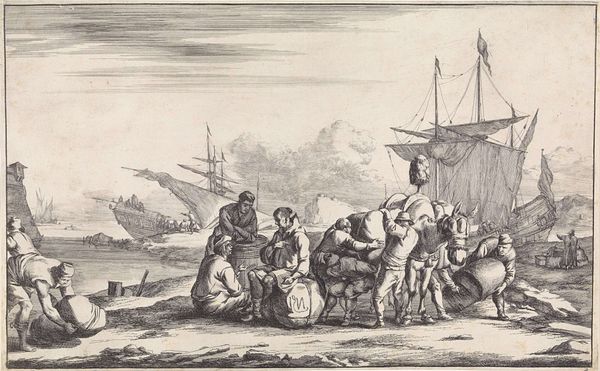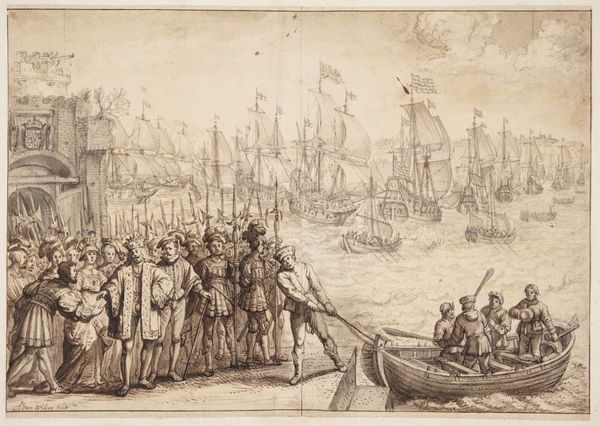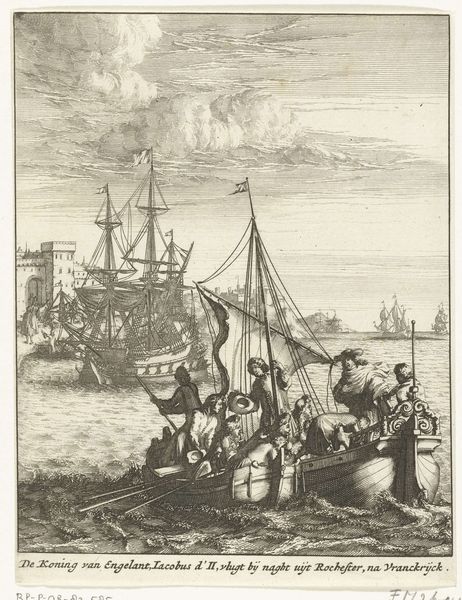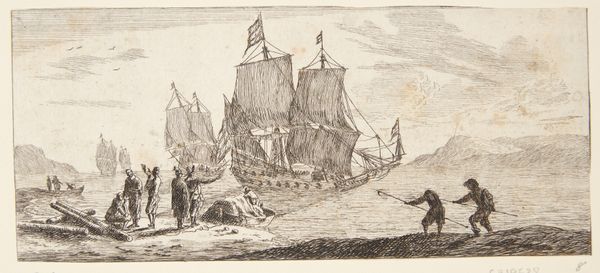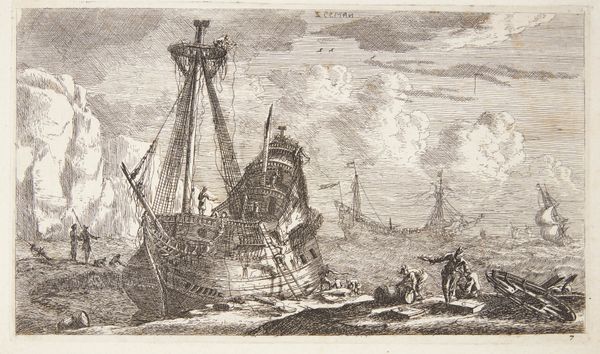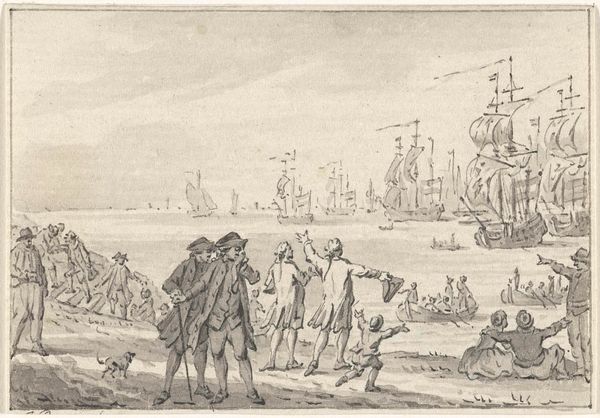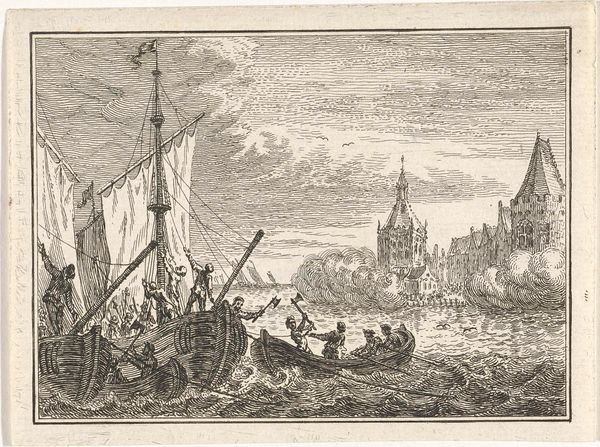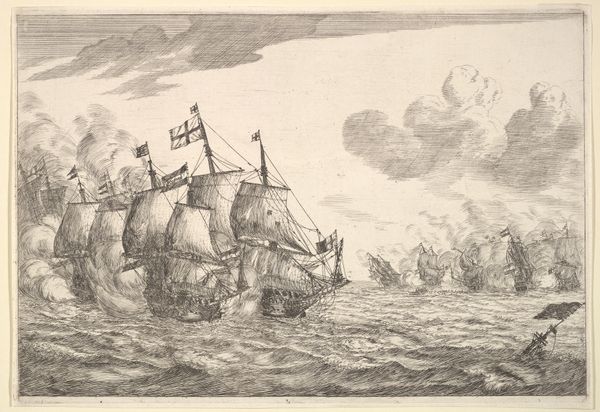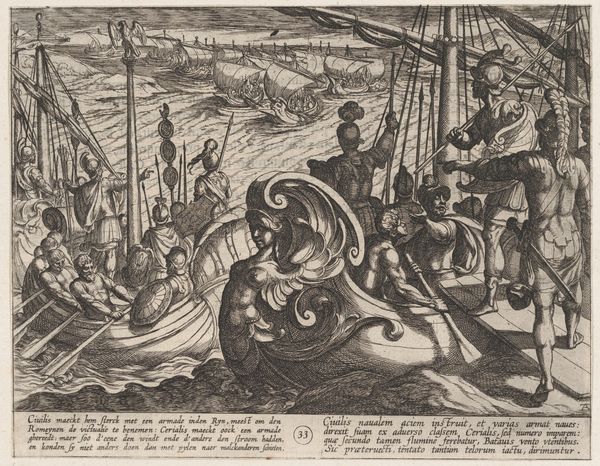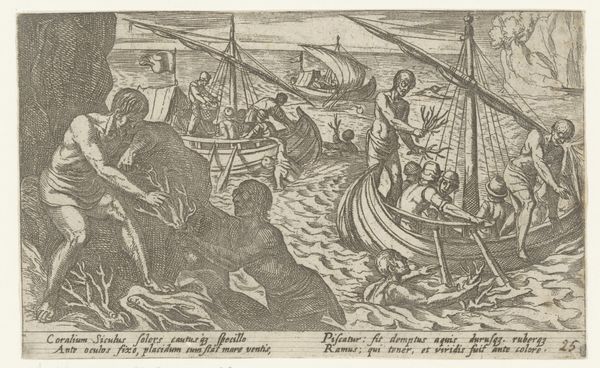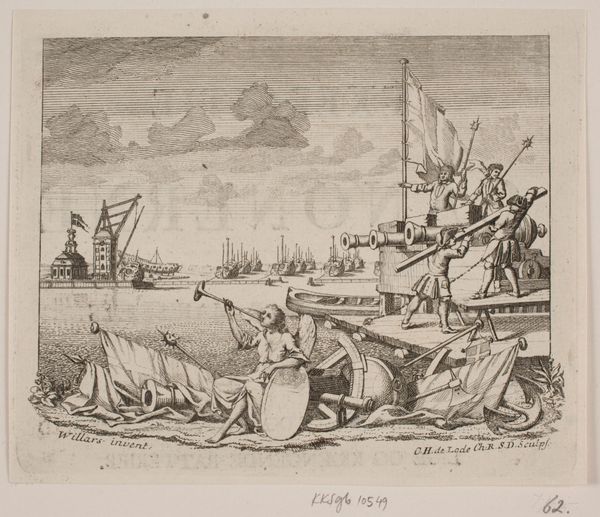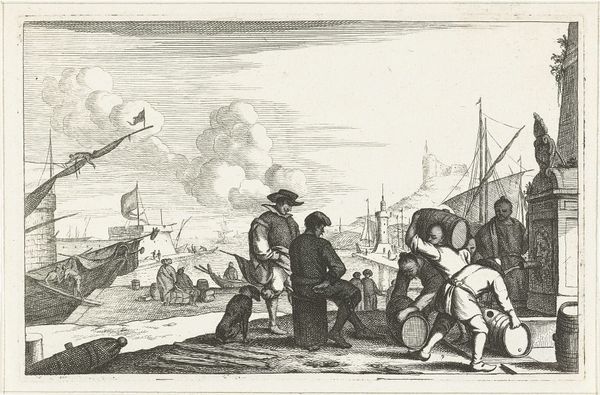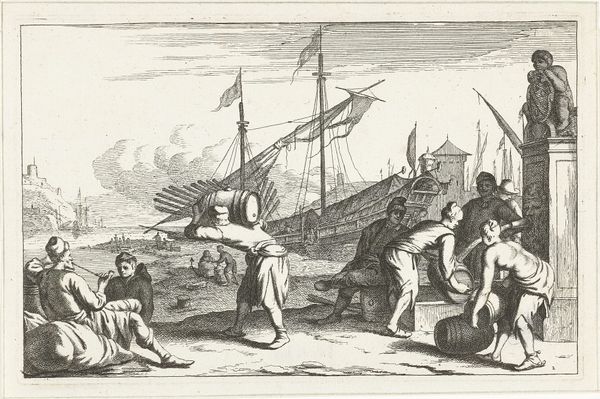
print, etching
#
narrative-art
#
baroque
# print
#
etching
#
figuration
#
form
#
line
#
cityscape
#
history-painting
Copyright: National Gallery of Art: CC0 1.0
Curator: Look at this intricate etching, “Capricci di varie battaglie” by Johann Wilhelm Baur, created around 1635. What’s your initial read of it? Editor: A chaotic transfer… almost clandestine, with these looming ships in the background and a mix of urgency and weariness on the figures' faces. It has this oppressive air of military movement, which can also suggest power and displacement at the same time. Curator: Yes, there's certainly an overwhelming mood, built primarily through Baur's technique, those very fine, dense lines giving it all a tremendous visual complexity. We see figures being ferried from ship to shore. And then we see the suggestion of larger societal struggles, conveyed through visual tension. Editor: Exactly! Consider the symbolism—the ships as agents of exploration and oppression, the figures caught between these spaces embodying that moment when control changes hands. Are they prisoners, merchants, reinforcements? The ambiguity itself is powerful. It speaks to how ordinary lives become caught in larger geopolitical shifts. And don't forget how the landscape frames that struggle, dwarfing the human figure. It emphasizes who benefits, who doesn't and at whose expense that shift happened. Curator: Absolutely. It invites viewers to unpack allusions. In terms of imagery, notice, for example, the costumes. Each style indexes very specific military and mercantile powers from that time. Do you feel that also plays into the visual dialogue, reinforcing the weight of specific memory here? Editor: Absolutely. Baur deliberately employs these recognisable cues to provoke deeper considerations about national conflicts and economic ambition. The detail seems to shout for some call to action but there are far too few individuals, their postures showing little drive… but instead seem forced? Is this the reality of the conflict we speak of, not bold soldiers, just everyday individuals with other dreams than conflict? Curator: An interesting idea. Through those elements, the artwork reveals the complexities of this transition period during this early 17th century history. What an extraordinary statement, conveyed simply through line and form. Editor: Indeed. I find it impactful how Baur interweaves these grand historical narratives into very human moments, prompting reflection on the lasting reverberations of conflict. The past echoes within our present— and in all futures that follow too.
Comments
No comments
Be the first to comment and join the conversation on the ultimate creative platform.
